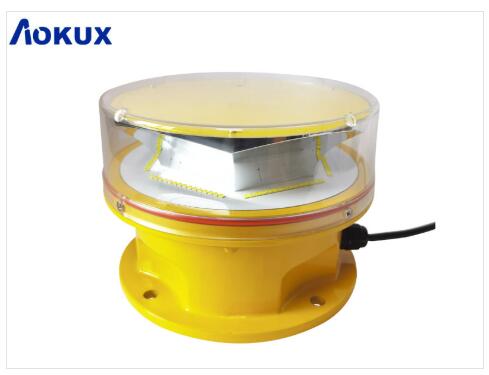As cities expand upward with towering construction projects, the risk of collisions between aircraft and tall structures increases. Tower crane aircraft warning lights play a crucial role in mitigating these risks by making cranes visible to pilots, especially during nighttime and low-visibility conditions. This article explores the significance, types, regulations, and innovations surrounding these essential safety systems.
Why Tower Crane Aircraft Warning Lights Are Essential
Construction cranes, often reaching hundreds of feet into the air, pose significant hazards to low-flying aircraft, including helicopters and small planes. Without proper illumination, these structures can blend into the urban landscape, increasing the likelihood of accidents.
Key benefits of tower crane aircraft warning lights include:
Enhanced Visibility: Ensures pilots can detect cranes from a safe distance.
Regulatory Compliance: Meets aviation safety standards set by global authorities.
Collision Prevention: Reduces the risk of accidents in congested airspace.

Types of Tower Crane Aircraft Warning Lights
Different lighting configurations are used depending on crane height, location, and aviation requirements. The primary types include:
1. Red Obstruction Lights
Used for cranes between 50–200 meters in height.
Emit steady or flashing red light for nighttime visibility.
Common in urban construction zones.
2. Medium-Intensity White Strobe Lights
Required for cranes exceeding 200 meters.
High-visibility flashing white lights for both day and night use.
Often paired with red lights for maximum effectiveness.
3. Dual Lighting Systems
Combine red and white lights for all-weather visibility.
Used in high-risk areas with heavy air traffic.
tower crane aircraft warning lights
|
Regulations Governing Tower Crane Aircraft Warning Lights
To ensure uniformity and safety, aviation authorities enforce strict lighting standards:
FAA (Federal Aviation Administration): Mandates lighting under AC 70/7460-1L for structures over 200 feet (61 meters).
ICAO (International Civil Aviation Organization): Sets international guidelines for obstruction lighting.
EASA (European Union Aviation Safety Agency): Regulates lighting in European airspace.
Failure to comply can result in fines, construction delays, or increased accident risks.
tower crane aircraft warning lights
|
Technological Innovations in Tower Crane Aircraft Warning Lights
Advancements in lighting technology have improved efficiency, durability, and sustainability:
1. LED Lighting
Energy-efficient, long-lasting, and brighter than traditional bulbs.
Reduces maintenance frequency and operational costs.
2. Solar-Powered Systems
Ideal for remote or temporary construction sites.
Environmentally friendly with minimal electrical infrastructure needed.
3. Smart Monitoring & Automation
Remote diagnostics and real-time alerts for malfunctioning lights.
Automated brightness adjustment based on ambient light conditions.
4. Wireless Synchronization
Ensures all lights on a crane flash in unison to avoid pilot confusion.
Enhances visibility in dense urban environments.
Challenges and Solutions in Implementation
Despite technological progress, challenges remain in deploying tower crane aircraft warning lights:
Light Pollution: Excessive brightness can disturb nearby residents.
Solution: Use directional lighting and adaptive intensity controls.
Harsh Weather Impact: Rain, wind, and extreme temperatures can damage lights.
Solution: Weatherproof, corrosion-resistant designs improve durability.
Power Supply Issues: Temporary construction sites may lack stable electricity.
Solution: Solar-powered or battery-backed systems ensure continuous operation.
Future Trends in Aviation Warning Lighting
The industry is evolving with new safety and efficiency enhancements:
Integration with Air Traffic Control (ATC): Real-time data sharing between cranes and ATC systems.
AI-Based Predictive Maintenance: Machine learning detects potential failures before they occur.
Drone-Compatible Lighting: Adjustable signals for both manned and unmanned aircraft.
Tower crane aircraft warning lights are indispensable for modern construction safety, ensuring that tall cranes remain visible to pilots and reducing mid-air collision risks. With advancements in LED technology, solar power, and smart monitoring, these systems are becoming more reliable and sustainable.
Strict adherence to aviation regulations and continued innovation will further enhance airspace safety, making urban construction projects safer for both workers and aircraft. By prioritizing effective tower crane aircraft warning lights, the construction and aviation industries can work together to protect lives and infrastructure.

